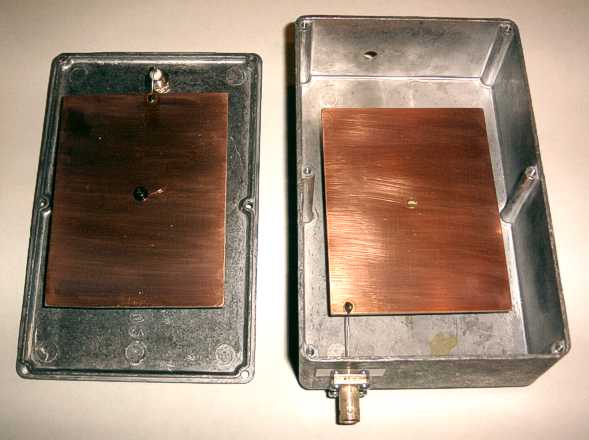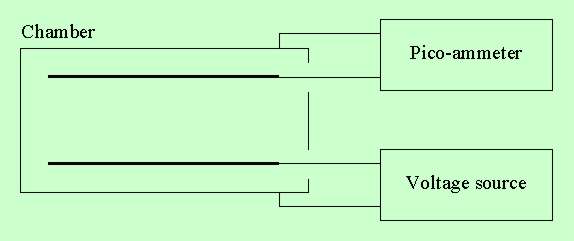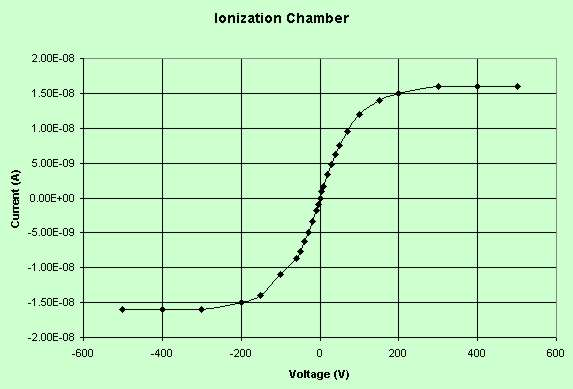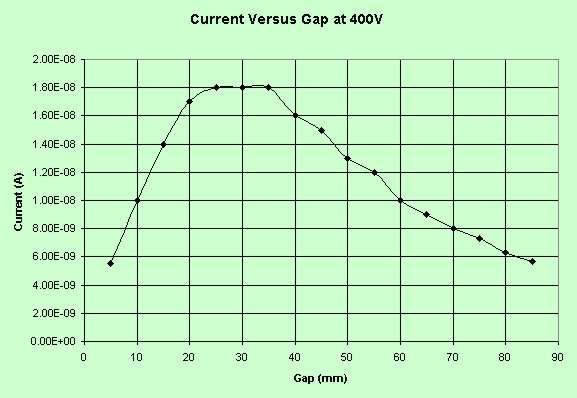

| Experiments Menu | Teralab Main Menu |
|---|
The chances are that you have at least one of these in your home. The most common use of an ionization chamber is in an ionization smoke detector.
In the ionization chamber of a smoke detector, there are two electrodes and a small alpha source. The alpha source in a modern domestic smoke detector is typically 0.9μCi (microcuries) of americium 241 and emits 33300 alpha particles per second. An alpha particle consists of two protons and two neutrons (a helium nucleus) with a typical kinetic energy of 6MeV. They are very strongly ionizing and will only travel about 5cm in air, producing about 105 ion pairs per cm. Each ion pair consists of an electron with negative charge (1.6x10-19C) and a positive ion. There is a voltage applied between the electrodes in the chamber. The electrons are attracted to the positive electrode, the ions are attracted to the negative electrode and a small current flows in the external circuit. Holes in the ionization chamber allow smoke to enter. When this occurs, the smoke particles attach to the ions, reducing the current. This is detected by the electronics in the smoke detector and the alarm sounds.
I don't recommend dismantling a smoke detector to remove the source. Although alpha particles only travel a short distance in air and are stopped by a sheet of paper, they are very energetic particles. If alpha emitting material enters the body, it is very dangerous and can cause cancer.
I made an ionization chamber from a die-cast aluminium box and two pieces of copper clad board. There are two BNC connectors, each connected to one of the boards.

The polarizing supply connects between the lower plate and the box. A sensitive ammeter is connected between the upper plate and the box. The advantage of this arrangement is that both the supply and the ammeter can be connected with respect to earth. The box can also be earthed. The circuit is shown in the diagram below. The source can be placed on the lower electrode.

An Am241 source from a very old Thorn smoke detector was placed in the chamber. Being from such an old detector, this source is considerably more than 0.9μCi. I estimate that it is about 70μCi. The gap between the plates was 18mm. The current was measured using a Cooknell Electronics CP13 Pico-ammeter. When there is no polarizing voltage, only a very small current flows (in the order of 50pA). As the voltage is increased, the current rises as more and more electrons and ions are collected before they can recombine. Above about 300V, all the electrons and ions are collected and the chamber is said to be saturated. This can be seen in the graph below. If the voltage polarity is reversed, all that happens is that the electrons and ions travel in the opposite directions to before and the current reverses. If a small amount of smoke is blown into the box, the saturation current drops from 16nA to 10nA or less.
With the chamber operated at saturation, the current is proportional to the rate of ionization.

A plot of current versus plate gap is shown below for a polarizing voltage of 400V. For a given polarizing voltage, there is an optimum plate gap. If the gap is less, the alpha particles collide with the top plate before giving up all their energy to the air. If the gap is too large, the electrons and ions can recombine before they reach the plates. A good gap size would be 30mm. The chamber is still saturated at this point and the current has reached a maximum at 18nA.

By pumping air through an ionization chamber it is possible to detect radioactive gases such as radon and tritium. The half life of radon can also be measured using an ionization chamber, but quite a high concentration is required.
| Experiments Menu | Teralab Main Menu |
|---|